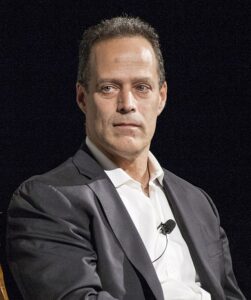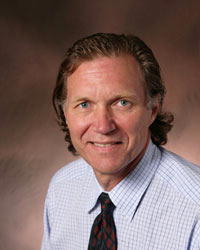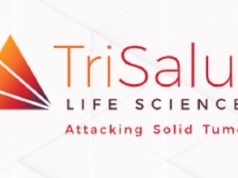“Dombrowski finally determined that the rupture had happened in the pancreatic branch of the inferior pancreatic-duodenal arcade, a minor and rarely problematic artery. All that remained was to run a catheter down the artery and embolize it with a series of coils that are left in place to create a massive blood clot. A guide catheter was advanced to the site of the occlusion in the celiac. Dombrowski forced his way through the blockage, to reach the rupture.”

This extract, taken from his latest book, In My Time of Dying, Sebastian Junger—acclaimed journalist and best-selling author of The Perfect Storm—exemplifies a visceral departure from his usual exploration of conflict and war. Here, he offers a sobering first-person account of his near-death experience and the interventional radiological treatment that saved his life.

In stark contrast to the gravity of Junger’s experience, to Phillip Dombrowski (Cape Cod Hospital, Hyannis, USA)—the interventional radiologist who treated Junger—these events were somewhat routine. Yet, when told from the perspective of the patient on the table, the pioneering interventional techniques used to treat critical conditions such as Junger’s are brought to life. Speaking to Interventional News, Dombrowski recounted the incident.
“It was during the beginning of the COVID-19 pandemic, and I got a call for our interventional service for a late-50-year-old male with a ruptured aneurysm in his pancreatic artery. Haemodynamically, he was in a very guarded condition in terms of his blood pressure, and I had been given prior warning as he was being resuscitated in the emergency room at that time.
We were still perplexed over the source of his bleeding, and a computed-tomography [CT] scan was ordered which ultimately showed that he was bleeding from the bed of the pancreas and had a large intraperitoneal haematoma. I got a call from Dan Gorin, the vascular surgeon on call, and Steve Kohler, the emergency room physician, who felt he was not a good candidate for surgical exploration. We considered approaching this from an intravascular standpoint, and when we were able to isolate the area from the CT scan, the issue appeared to be a pseudo-aneurysm occurring from the pancreatic or duodenal artery that supplies the pancreas. We determined that an endovascular approach would be best to try to embolize or block the aneurysm.”
Dombrowski noted that this type of aneurysm is rare, accounting for only 2% of all visceral artery aneurysm cases and carries a mortality rate of between 20–30%.
“After resuscitation, his vital signs had improved and so we were using what we call conscious sedation which means the patient is in a semi-awake state. I know that Junger has spoken on being awake for different parts of the procedure and could hear and was aware of what was happening. It’s interesting to read.”
“I was very worried that I had died but didn’t know I had,
and was some kind of spirit—I know how crazy this sounds”—Sebastian Junger
Junger describes how, during his treatment, he was visited by his deceased father who invited him to join him. He recounts that this is the last thing he remembered before coming to the following day in the intensive care unit. This ordeal prompted him to research the IR techniques that prevented his death and provoked his near-death experience. Junger began reviewing medical literature and interviewing retired interventionists, seeking a better understanding of what had happened.
In conversation with Interventional News, Junger shared that he was “strongly averse” to literature on near-death experiences for a long time. “It’s hard overstate how psychologically debilitating this was for many months afterwards. I was very worried, against all evidence, that I could develop another aneurysm very quickly that would rupture and kill me. I was very worried that I had died but didn’t know I had, and was some kind of spirit—I know how crazy this sounds—” Junger explained.
“Apparently, this kind of derealisation is a well-known consequence of near-death experiences. A mass was later detected against my pancreas, which was clearly the remnants of the haematoma, and was tested as a possible tumour. That, of course, was absolutely terrifying. The testing went on for months and wound up with a recommendation of surgery ‘just to make sure’. This process was frankly far more traumatic than the original aneurysm rupture and really should be guarded against. I opted against surgery, and I am fine.”
Junger stated that, following his treatment, he experienced mild radiation burns on his back—“an unavoidable consequence of saving my life”. Although rare, he highlighted how important information sharing is on radiation exposure and the associated risk of cancer. “The vast majority of survivors are going to be externally grateful to the doctors for saving their lives, but still deeply traumatised by the events. This leaves them wide open to paranoid fears about their health that only full, open conversations can alleviate.”
In Nantucket last month, Dombrowski and his family attended Junger’s talk on his experience, meeting for the first time since his treatment. For Junger, this meeting was emotional, describing Dombrowski as a “sweet, compassionate and humble man, and an unbelievably skilled interventionist”.
“Everyone in the audience knew that they could have been me in the IR suite that day. After the talk, Dombrowski and I hugged and chatted for a bit. It brought the entire terrifying ordeal full circle and allowed for a bit of closure,” Junger said.
Reflecting on Junger’s near-death experience, Dombrowski admitted that he doesn’t necessarily believe in life after death. “I tend to approach things in a very scientific way and need some proof before believing. But there are situations that have occurred that make you wonder if there is something beyond what we can understand or grasp.”
Yet—suspending his disbelief—Dombrowski anecdotally shared how he came to realise that he was the interventionist described in Junger’s book.
“I got a message from Michael Hallisey saying ‘Good job—I’ll call you in two hours’. Hallisey is an interventional radiologist I’ve known for 30 years. We were at the forefront of training in the 1970s and 80s—it was a relatively new profession, and we would both call to discuss cases and bounce ideas off each other. Hallisey told me that he had recently seen the New York Times article about Junger’s experience and was heading to his book signing in Atlanta and had listened to his talk, not realising that I was the one who had performed the procedure until after. He called me on his drive home.
The fact that we have known one another and collaborated for years—and Hallisey had even published a paper on the specific aneurysm Junger experienced 20 years earlier—makes me think there is probably more out there in space than we realise, something pulling the strings.”










